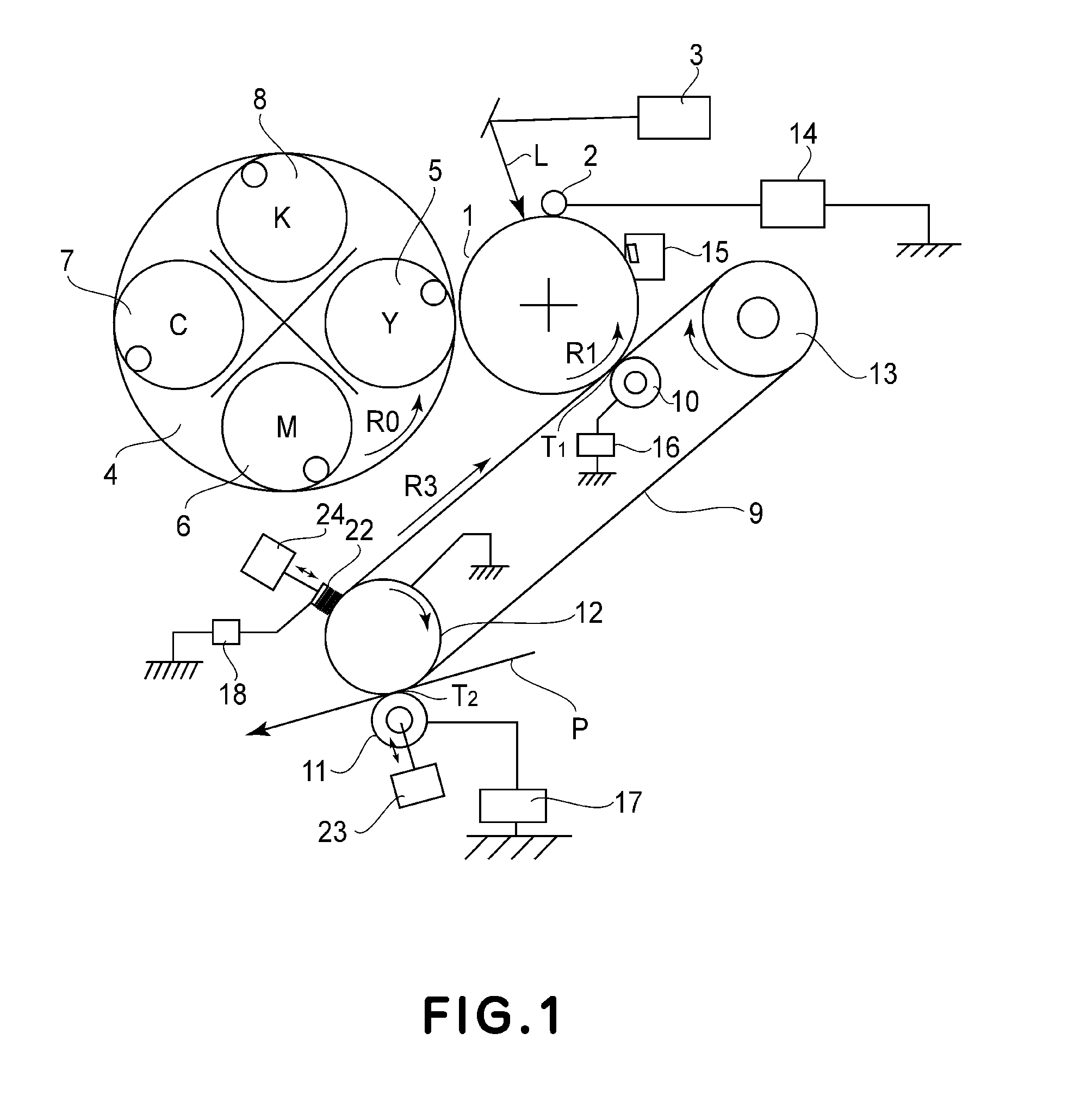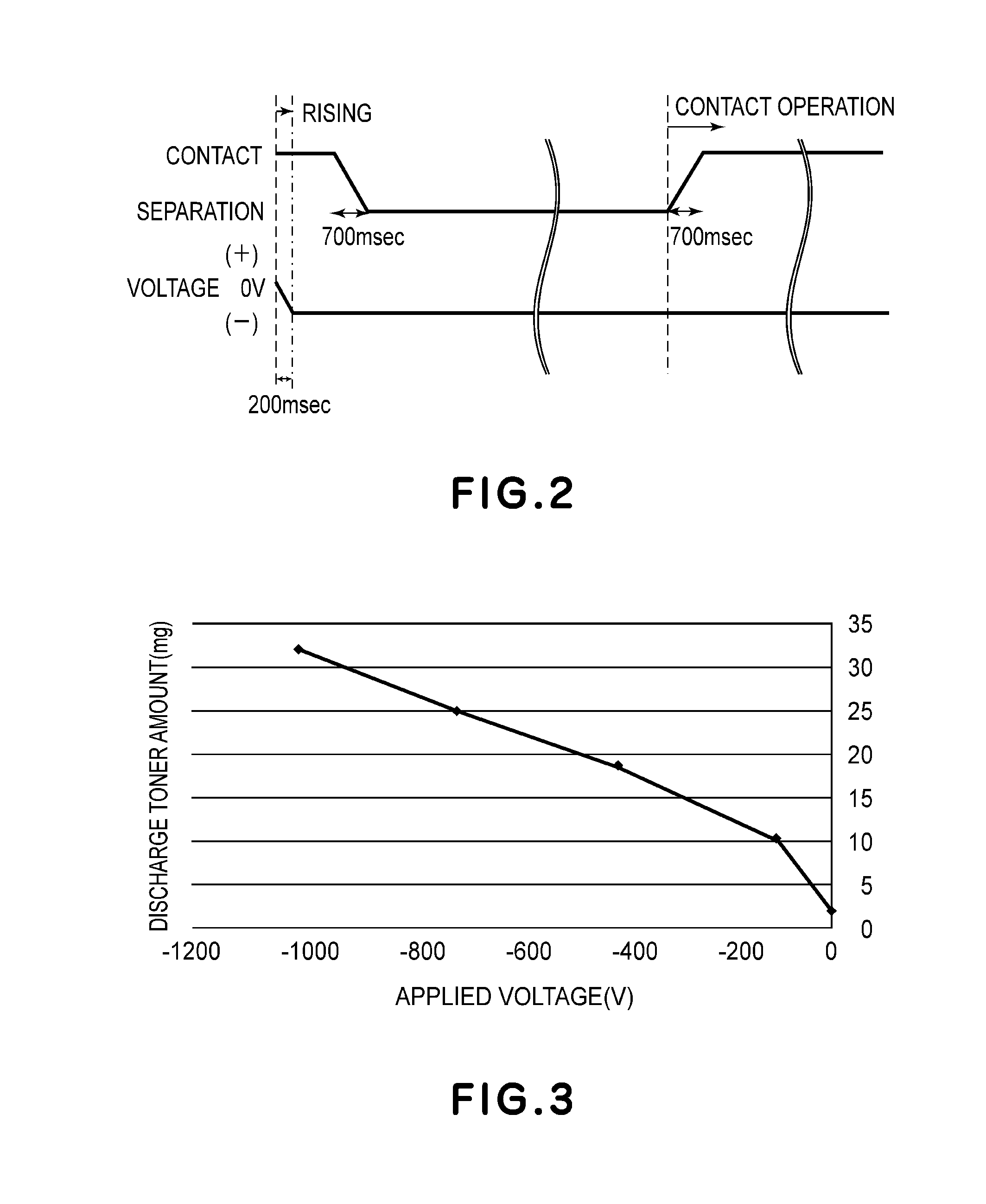Image forming apparatus
- Summary
- Abstract
- Description
- Claims
- Application Information
AI Technical Summary
Benefits of technology
Problems solved by technology
Method used
Image
Examples
embodiment 1
[0022]FIG. 1 is a schematic sectional view showing an image forming apparatus in this embodiment. In this embodiment, the image forming apparatus is of an electrophotographic type and of an intermediary transfer type, in which toner images of a plurality of colors (e.g., four colors) are successively transferred onto a rotating intermediary transfer member a plurality of times (e.g., four times) and then are collectively transferred from the intermediary transfer member onto a transfer material at a secondary transfer portion. Hereinafter, this type is referred to as a four-path type.
[0023]In this embodiment, the image forming apparatus includes a drum-like electrophotographic photosensitive member 1 as an image bearing member (hereinafter referred to as a photosensitive drum 1). Around the photosensitive drum 1, a charging device 2, a rotary 4 including developing devices 5, 6, 7 and 8, an intermediary transfer belt (intermediary transfer member) 9 and a primary transfer roller (pr...
embodiment 2
[0048]In the case where the image formation is continuously effected (hereinafter referred to as continuous print), the electroconductive brush 22 is contacted to the intermediary transfer belt 9 immediately before the secondary transfer is started. Then, after the contact and before the secondary transfer residual toner passes through the electroconductive brush 22, the DC voltage of the photosensitive drum is applied to the electroconductive brush 22. The residual toner passes through the electroconductive brush 22 is positively charged, thus being transferred onto the photosensitive drum 1. Further, the primary transfer of a subsequent toner image is performed immediately after the primary transfer of the preceding toner image of black, thus being timed to the transfer of the residual toner. A trailing end of the residual toner passes through the electroconductive brush 22 and thereafter the voltage applied to the electroconductive brush 22 is cut off and the electroconductive br...
embodiment 3
[0053]In this embodiment, the amount of the toner discharged from the electroconductive brush 22 is adjusted. In the case of the four-pass type image forming apparatus, only one photosensitive drum collects the toner discharged from the electroconductive brush 22. When a large amount of the discharged toner reaches the primary transfer portion at one time, there is a possibility that the toner transferred from the intermediary transfer belt 9 to the photosensitive drum 1 is not completely collected by a cleaning means 15 opposing the photosensitive drum 1 at the primary transfer portion.
[0054]Further, in the case where the toner on the photosensitive drum 1 is not completely collected by the cleaning means 15, the toner can be deposited on the charging roller 2. When the toner is deposited on the charging roller 2, the charging of the surface of the photosensitive drum 1 is insufficient at the toner deposition portion and thus leads to an occurrence of image defect corresponding to ...
PUM
 Login to View More
Login to View More Abstract
Description
Claims
Application Information
 Login to View More
Login to View More - R&D
- Intellectual Property
- Life Sciences
- Materials
- Tech Scout
- Unparalleled Data Quality
- Higher Quality Content
- 60% Fewer Hallucinations
Browse by: Latest US Patents, China's latest patents, Technical Efficacy Thesaurus, Application Domain, Technology Topic, Popular Technical Reports.
© 2025 PatSnap. All rights reserved.Legal|Privacy policy|Modern Slavery Act Transparency Statement|Sitemap|About US| Contact US: help@patsnap.com



